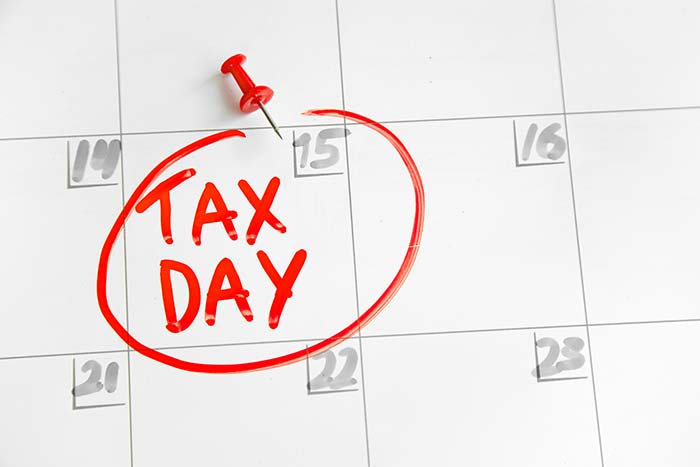Yesterday was Tax Day – also known as the most infuriating day of the year.
Why?
Because even if you received a refund, you know your tax dollars are going to pay for things like a $2.7 million bike park in White Sulphur Springs, West Virginia (which has just over 2,000 residents), a new $5 million trail at Coastal Carolina University and a $500,000 restoration of a traffic signal in Falls Church, Virginia.
Now, don’t get me wrong. I’m all for bike parks, trails and working traffic lights. I just happen to believe that the people who use them should be the ones who pay for them.
When it comes to filling out my tax returns, I’m not particularly aggressive. But I do try to take every deduction I can and avoid paying any more than I’m legally obligated to pay.
The money is better off in my pocket than under Speaker Mike Johnson’s and Rep. Alexandria Ocasio-Cortez’s control. I guarantee my spending choices will be smarter.
Here are a few things I do to save money on my taxes that you may be able to employ as well.
1. Use Your Side Hustle to Your Advantage
Do you generate income from a hobby or side hustle? If so, as long as you report it on your tax returns, you may be eligible for a wide range of deductions, from mileage on your car to education, meals and more.
Keeping careful records is easy to do. Just create a spreadsheet and enter your mileage and other costs every time you do something related to your hobby or side hustle.
For example, if you’re a musician who gets paid for occasional gigs, your travel to and from your shows and rehearsals counts against your taxable income, as do expenses related to your instrument (i.e., a new guitar), meals on the road, etc.
You may also be eligible to contribute to a SEP (Simplified Employee Pension) IRA.
Business owners can contribute up to 25% of their earned income or up to $69,000 (whichever is less) to a SEP-IRA – even if the business is just a side hustle and they’re already contributing to a retirement account sponsored by their full-time employer. I highly recommend doing so if you are able, as it will lower your taxable income and you’ll be able to invest the funds tax-deferred until you withdraw them.
2. Capitalize on Your Employee Benefits
Many employers offer flexible spending accounts (FSAs) and health savings accounts (HSAs). Both accounts allow you to contribute pretax money to spend on regular expenses like day care or healthcare.
For example, if you make $80,000 per year, have a child in day care and contribute $5,000 to an FSA or HSA, your taxable income drops to $75,000, and the other $5,000 is used to pay for day care, which you would’ve had to do anyway. The difference is you would then be taxed on income of $75,000 instead of $80,000, which would save you a significant amount.
Typically, FSAs are “use it or lose it.” If you don’t spend all the money that you contribute to the FSA by the end of the year, it’s gone. So be sure to contribute only what you will use in that year.
HSAs are different. The effect on your taxable income is the same, but you don’t have to spend the money by the end of the year. It rolls over and accumulates in your account. In fact, you don’t have to spend it for years if you don’t want to, and you can invest it just as you would with another retirement account, knowing that it’s there for you in case you need it to cover health expenses.
Most people who have HSAs use them for all kinds of health-related costs, such as doctor’s visits, medication and many over-the-counter items.
To be eligible for an HSA, you must be enrolled in a high-deductible insurance plan.
Talk to your employer’s benefits manager to see whether your company offers FSAs or HSAs (or both). I’ve used them for years, and they’ve saved me thousands on my taxes.
3. Be Strategic With Your Accounts
If you’re retired and you either have already dropped into a lower tax bracket or you may by the time you need to withdraw funds from your retirement account, it may make sense to transfer assets that are held in a 401(k) or IRA into a Roth IRA.
When you make the transfer, you’ll pay tax on the money immediately, but it will be tax-free after that, including when you withdraw it.
Another strategy is to make sure you’re paying the lowest rate possible on your investments. If you own both bonds and dividend stocks, keep in mind that dividends are taxed at a much lower rate than bond interest, which is taxed at your ordinary income tax rate.
For that reason, try to hold your bonds in your retirement accounts so you’re not paying that higher tax rate on the interest.
Be sure to talk to a tax advisor about these and any other strategies to ensure that you’re using them correctly and that you aren’t paying Uncle Sam a penny more than you owe.
What are some of your favorite tax-savings strategies? Leave them in the comments section below.
